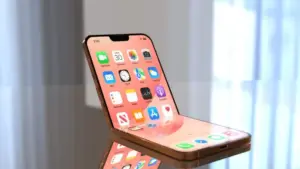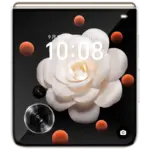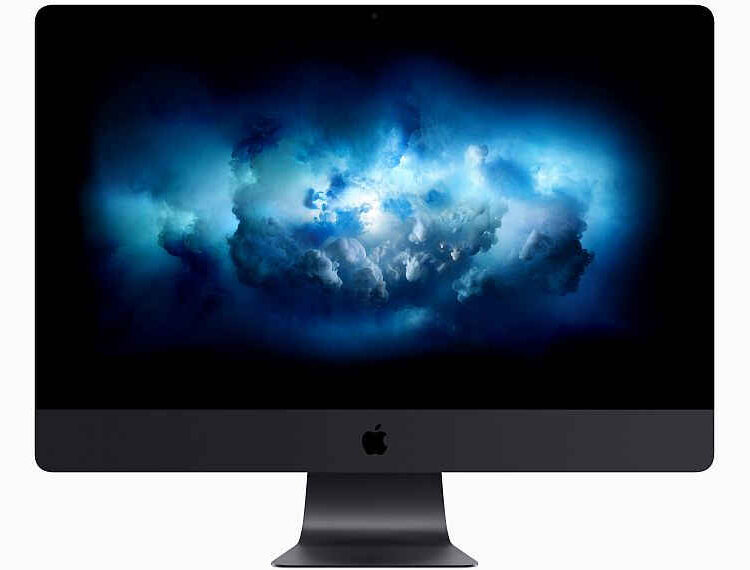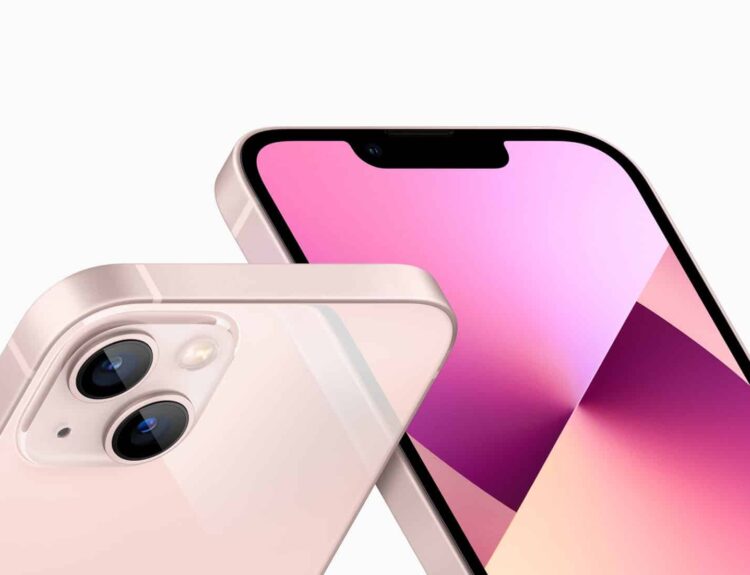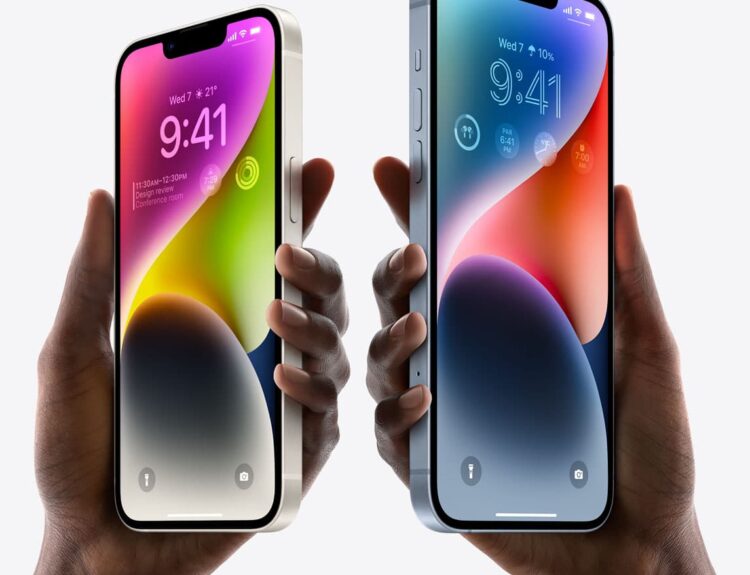Foldable iPhone is coming?? Foldable devices look like the future of smartphones. Manufacturers such as Motorola, Samsung and Huawei have launched smartphones with folding screens, and more are expected in the coming months.
Table of Contents
The appeal of the concept is easy to see – you can use the standard iPhone screen when you’re outside, and when you want to play any game or read an article, “turn on” the iPhone and increase the screen size. screen size. iPad Mini – a concept similar to the high-end Samsung Galaxy Z Fold 3.
Alternatively, Apple can follow the same route as the Motorola Razr and Samsung Galaxy Z Flip 3 and halve the screen size of the smartphone when not in use.
There have been many rumours over the years, some dating back to 2016, indicating that Apple was actively looking for a flexible OLED manufacturer to produce panels for foldable iPhones, and a 2019 report suggested that Apple was in the testing phase.
Over the years, many patent applications have also been filed, and John Prosser, who escaped the leak, shared a few details on what to expect from a foldable iPhone and suggested that something was on the way with Apple – more on that later.
Aside from rumours, there are currently several issues with folding smartphones, such as price, durability and quality. Most likely, Apple is working behind closed doors on these issues, and, likely, Apple will not whisper about the foldable iPhone until it approaches perfection.
This may mean that the device is still a few years old, but to be honest, it’s worth the wait, isn’t it? And until then, the idea of the folding iPhone may not seem so much science fiction.
When will Apple introduce a foldable iPhone?
This is a million-dollar question.
Bank of America analyst Merrill Lynch claimed that Apple is preparing to introduce a foldable phone in 2020, but of course, this never happened. So when can we see the foldable iPhone debut?
A Weibo leak in September 2020 claimed that Apple had ordered folding display prototypes from Samsung, but more recent rumours suggest that Apple has since parted ways with Samsung and is now working on a prototype display with LG.
As for specific dates, an internal source for the leaked John Prosser claims that Apple will not introduce the foldable iPhone until 2023, which is in line with the predictions of investment firm EqualOcean and renowned Apple analyst Ming-Chi Kuo.
Kuo claimed in January 2021 that if Apple could solve its “core technology and mass production problems,” it would only start in 2023, but that “it hasn’t started yet” and therefore plans could change.
However, despite Kuo’s May 2021 follow-up note, which doubled its 2023 release date, the analyst revised its forecasts for the September 2021 note and suggested that the now-folding iPhone would not go on sale until the second half of 2024.
Mark Gurman from Bloomberg suggested that the foldable iPhone will not be released for another 2-3 years in 2021, which is in line with Kuo’s forecast.
As for the screen leaks, Ross Young, a screen analyst with a flawless experience at the time of writing, also threw his hat in the ring. If you think that the “earliest” folding is not expected until 2023, the analyst initially thought there would be more releases in 2024, and that’s bad, the updated forecast brings even worse news.
In a DSCC report, in late February 2022, Young suggested that Apple’s foldable plans be postponed until 2025 this time. It has been claimed that Apple does not want to continue Samsung’s path and does not want to beta on the form factor with its fans. , but in true Apple style, launch only when the product is ready.
Since most of the signs pointing to the accumulation are still in the early stages of development, don’t expect a release before 2023 that looks like a safer bet in 2024 or 2025.
What will the foldable iPhone look like?
While many believe that Apple will follow the same path as the Samsung Galaxy Z Fold 3 and Huawei Mate X2 and produce a folding iPhone like a book in the middle, the current rumours detail a few different possibilities.
Given the durability, noticeable wrinkles on the foldable screens, and common problems with overall coating quality, one of Apple’s prototypes may be more meaningful.
In a series of tweets in June 2020, Jon Prosser explained that the foldable iPhone may not consist of a single flexible screen. Instead, the leak claims that the “foldable” iPhone prototype consists of two separate displays connected by a central hinge.
Given all the challenges associated with the durability and cost of flexible display technology, this could be a smart alternative.
However, a Bloomberg report for early 2021 shows that Apple, like Samsung and others, is developing a prototype of an invisible hinged folding display, one step ahead of the two-screen design detailed by Prosser in 2020.
This is reflected in Prosser’s February 2021 report, which no longer thinks that Apple is going the dual-screen route, and now shows that Apple is interested in developing something similar to Samsung’s Galaxy Z Flip 3-cover form factor.
The leak didn’t go into much detail other than saying that the company was considering “fun colours” for the iPhone, which can be folded according to the colourful iPhone 12 series, but it’s too early for Apple to complete it. decisions regarding colour schemes.
According to equalOcean, an investment research firm based in Canada, Apple is working on a single-screen folding display reminiscent of the iPad mini when opened. The company predicts that Apple will introduce a foldable iPhone with a screen size of between 7.3 and 7.6 inches when opened, and will be compatible with the Apple Pencil.
Considering that fragile screens are compared to standard glass smartphones, the stylus concept, which works on a foldable screen, may seem a bit too “extraneous”, but it’s a hallmark of the new Galaxy Z Fold 3 thanks to its soft, retractable stylus tip. So it is possible.
Competitive analyst Ming-Chi Kuo reports on the 8-inch open display, which is slightly larger than the May 2021 forecast. Kuo goes one step further than talking about size, claiming that it will have an 8-inch QHD + flexible OLED display, and claiming that TPK will have the silver nanotel touch solution used in the HomePod Mini due to several advantages over SDCs. Y-Octa technology “.
Kuo believes that the latter could create a “long-term competitive advantage” for Apple in the foldable market, as it is subject to multiple folding, rolling shape factors, and so on. which is a “superior” option for future devices.
Regardless of the final form factor, industry sources suggest that LG is working with Apple on a prototype for a foldable display, although it is not yet known whether it will be produced by LG or Apple.
Patents
Jon Prosser‘s bizarre claims about the dual-screen iPhone are backed by an Apple patent that was patented by Apple in less than a day. The patent describes a device consisting of two separate panels connected by a fabric hinge system.
This is not the first patent to describe a foldable iPhone. A separate patent for the “flexible display device” was issued in 2018 and is a continuation of the patents granted in 2016, 2014 and 2011. There is also a separate 2016 patent that describes an “electronic device and includes: bending body” bending reading; and a screen in a body that bends around a torsion axis. ”
There is also an interesting patent filed in 2018, which describes a triple-fold smartphone that can be folded in different directions, unlike the existing folders. According to the patent application, the double screen can be bent backwards or folded inwards at both ends, giving the user the freedom to use the folding screen as they wish.
It could also allow Apple to produce a smartphone-sized foldable device that can be folded into something the size of an iPad, and it’s very similar to the futuristic tablets used in Westworld. Then it is an interesting concept.
Oh, and let’s not forget Apple’s patent, which describes a way to avoid damaging screens when bent. The patent for “flexible electronic devices” suggests the possibility of damage in cold conditions, and offers a convenient solution – “the part of the screen that coincides with the bending axis can be heated automatically by light pixels.”
Another Patently Apple discovery demonstrates a new concept where a wrinkle does not fall below the middle of the screen, but when the device is folded, part of it remains open, acting as a second screen or acting as a row for notifications. whom. To the external screen of the Galaxy Z Flip.
Apple has also introduced patents detailing ways to avoid the problem of breaking folding screens. Such a patent describes a system that allows the screen to bend, not bend, to reduce the amount of pressure on the panel, and this is no different from the system found in the Galaxy Z Flip and Motorola Razr.
In July 2021, a patent called “Electronics with Adjustable Screen Windows” provides details about an expandable display that can turn off the camera block (and possibly other Face ID components) when not in use. While not specifically for the foldable iPhone, the expandable display concept isn’t far from what Android competitors use to combat the wrinkles that are present in most current folding devices.
The latest patent gives us more information on what to expect from folding. The patent for “electronic devices with fibre composite friction hinges” gives us a look at a thin but durable hinge.
Although the technology can be used in laptops, The patent specifically refers to foldable screens. The patent description states that “an electronic device may have a flexible layer, such as a flexible screen, that overlaps the hinge structure.”
Of course, it should be noted that Apple, like most technology companies, is always applying for patents, and this is not an indication of what we will see on the upcoming iPhone or iPad, but it gives us a good idea of the innovation.
How much will the foldable iPhone cost?
This is a difficult question to answer, not only because we don’t know much about what the foldable iPhone has to offer, but also because we don’t know when the foldable iPhone will hit the market.
Currently, foldable smartphones are priced higher, with the Galaxy Z Fold 3 selling for £ 1,599 / $ 1,799 and Huawei’s Mate X2 selling for around $ 1,985 / $ 2,785, but as with all technologies, the price will drop.
We are also in the dark about what Apple can plan. There are numerous patents indicating that several prototypes are under construction, and the proposed design and features will largely reflect the price tag. It could be one of the ‘cheap’ foldable devices like the £ 949 / $ 999 Galaxy Z Flip 3, or it could be one of the larger foldable devices with a larger price tag.
It is impossible to say at this point, but most likely it will be a premium product that will meet the high price tag.

